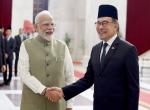One of the most contentious issues that successive Governments have grappled with since the last four decades but never quite got it right, is the formulation of a national drug policy.Various efforts were made to get the correct balance between the legitimate interests of the consumers and those of the pharmaceutical industry, but they left both the parties dissatisfied. While the consumers believed that Governments have often buckled to pressure from the strong drug manufacturing lobby, the industry lamented that it was expected to perform while being shackled from all sides. The end result has been that the drug manufacturing sector has suffered from misplaced constraints that were placed by the Government and the consumer has paid the price for a skewed policy which pushed both essential and life-saving drugs out of the common man’s reach.
The Narendra Modi administration has now taken the bull by the horns in a bid to address the anomalies. It has initiated a process to revamp the national drug policy. The Union Government's decision to completely overhaul the national drugs policy was long overdue and must be welcomed. The present overhaul is focused towards systemic reforms and gives priority to health outcomes rather than mere law enforcement. The measures, proposed by the NITI Aayog, in consultation with the Prime Minister's Office (PMO), has decided on a three-pronged strategy.
First, it aims to reduce the number of drugs under the price control mechanism. Price control had been an area of tension not only for the pharmaceutical industry but also for the National Pharmaceutical Pricing Authority (NPPA), which is the price governing body. This is keeping in mind that access to affordable medicines has remained a distant dream for the citizens. A check on the pricing of medicines was essential, as under the present system, the moment a drug is introduced into the essential list, it is subject to price control. With a ceiling price governing essential medicines, the needy, especially the poor, were forced to look for other options that can just be called a ‘compromise’.
It has also been a phenomenon that customers landed up buying overpriced medicine, as the situation demanded. On the other hand, unreasonable ceiling on prices became a barrier to the growth of the pharmaceuticals, as it not only discouraged investments also stunted innovation and competitiveness. The Government has, therefore, decided to review the functions of the NPPA with a new mandate. It would henceforth not be mandatory for the price governing body to fix the prices of medicines. The Government would do it as and when required. This will ensure both affordability of medicines and robustness of the pharmaceutical sector.
Second, with the purpose to establish good manufacturing practices, the Government is planning to do away with periodic renewal of licenses to drug manufacturers. As it is, the Government’s decision early this year, to enhance the license fee (including drug license fee), renewal fee, change of premises fee and others, by five to ten times, had not gone down well with chemist associations. The Central Drugs Standard Control Organisation (CDSCO) is mulling to revisit the provisions of the Drugs & Cosmetics Rules of 1945, to grant license for manufacturing, sale and distribution of drugs perpetually. The basic aim here is to simplify manufacturing procedures for ease of doing business and also to improve the quality of drugs.
Eventually, the Government has plans to review the process of granting approvals for drug and medical devices research too. Third, the Government seeks to simplify medical research in the country. With a handful of medical institutes, that too poorly funded, and a lack of infrastructural and guiding facilities, medical research output in the country has been abysmally low. According to a study published in 'Current Medicine Research and Practice', only 25 (4.3 per cent) of the institutions produced more than 100 papers a year — and these accounted for 40.3 per cent of the country's total research output. The study revealed that one of the primary reasons for the poor turnout was the enormous clinical burden on the industry and research organisations which left them with little time for academic activities.
It also said that lack of guidance and absence of role models among seniors, who themselves have published little, were added major factors, as was an inadequate institutional support in the form of funds and infrastructure. Given that India needs trained and young innovative minds to meet future challenges, the Government’s move in this direction must be appreciated.
Demonstrating its priority to this complicated issue, the PMO had called for a couple of meetings last month. In the first meeting which was attended by the Health Secretary, NITI Aayog representatives and the Department of Industrial Policy and Promotion (DIPP), along with officials from the CDSCO, the focus was on improving the quality of drugs and also about licensing procedures. The other meeting was between representatives from the pharmaceutical
industry and the Health Ministry, which discussed at length about future strategies to strengthen the pharmaceutical industry and the comparative advantages enjoyed by Chinese manufacturers.
The first drug price control policy in the country, the Promulgation of the Drugs Order 1962 (Display of Prices) and Drugs Order 1963 (Control of Prices), was introduced due to the Chinese aggression which froze medicine pricing. Then came the Hathi Committee Report (1975), which led to the formulation of the Drug Policy (1978), which was a landmark achievement in the sense that it set up a National Drug Authority and established selective price control on medicines. Two decades later, the Drug Price Control Order (DPCO) 1995, was introduced to address issues regarding intellectual Property Rights rules, indigenous manufacturing of drugs, strict controls over pricing etc. The latest one, the Drug Price Control Orders (DPCO) 2013, is a successor to the DPCO 1995, which set a ceiling price on essential life-saving medicines.It came into effect from May 2014, replacing the earlier order which regulated a mere 74 bulk drugs.
The new order covered 680 formulations. Sadly, these policies, which were put in place to promote indigenous manufacturing; increase technological capabilities of the pharmaceuticals sector; and to control prices of essential medicines, not only remained ineffective, but also became a millstone round successive Governments’ necks. The DPCO 2013 has had other deleterious impacts too. Price control measures compelled several brands to withdraw from the market and resulted in a slowdown in new launches. From an average of four new drugs introduced in any specific category in 2011, the figure dipped to just one in 2014-15. The lower incentives as a result of the controlled prices led many manufacturers to be reluctant about spreading their reach in the rural sector. This affected consumption patterns too. According to a leading healthcare market research company, IMS Health, the consumption of price-controlled medicines in rural India dropped by seven per cent in 2014-15, whereas the sale of non-price- controlled drugs registered an increase by five per cent. Industry felt that this was a direct result of an intervention which was “artificial”, in the words of the then Secretary General of Indian Pharmaceutical Alliance, DG Shah. Besides, since price controls have hit the smaller manufacturers hard, who have had to either mute their presence or quit altogether, the bigger brands have ended up with even bigger market share and monopolies in certain segments.The pathetic state of affairs, a culmination of wrong approaches over the past decades, led to the Supreme Court stepping in. In July 2015, the court called the National Pharmaceutical Pricing Policy and the Drug Price Control Order of 2013 “irrational and unreasonable”.
Following a petition filed by an NGO, All India Drug Action Network, which challenged the DPCO 2013, a three-judge Bench, headed by Justice TS Thakur, comprising Justices V Gopala Gowda and R Banumathi, asked the Government to analyse and explain why the controlled price of essential medicines had been fixed at so high a level that it deprived the poor from getting life- saving drugs at reasonable rates.The NGO said that market-based pricing was not used for any price regulatory purpose and that under the 2013 policy, in many cases, simple average ceiling prices were higher than the market leader price. It also contended that under the new policy, drug manufacturers and dealers were earning a profit of 10 per cent to 1,300 per cent. It contended that the National List of Essential Drugs consisted of only 348 drugs. Many essential medicines were not included in the scheme of price control.
Subsequently, the Bench asked the Department of Pharmaceuticals of Union Ministry of Chemicals and Fertilisers to pass a "reasoned" order on the representation of the NGO within six months after hearing all parties concerned. The Bench observed, “The formula does not seem reasonable and rational. Your pricing is 4,000 per cent more than what is being provided by Governments of Tamil Nadu and Kerala. What kind of control is this?”Following the court reprimand, the Government in November 2015, formed a panel to review the DPCO 2013. It was an inter-ministerial committee, consisting of representatives from the Department of Industrial Policy and promotion, Health Ministry, National Pharmaceutical Pricing Authority and the Department of Pharmaceuticals. The committee was supposed to look into the pricing of medicines, and specifically in the market based pricing formula that was being used presently under the DPCO 2013.In its report submitted in December 2015, the committee recommended capping trade margins on not just such medicines which go by the moniker of ‘trade generics,’ but all drugs. The panel recommended capping of trade margins for expensive drugs at 35 per cent of maximum retail price. The report has called for protecting the end users via Government intervention and regulation.
India’s floundering with a proper drug policy is unfortunate, as it was among the first Third World nations in the world to attempt at formulating a national drugs policy. According to the Essential Medicines and Health Products Information Portal, a World Health Organisation initiative, India began well with its first drug policy in the 1970s, which led to a robust growth of an indigenous pharmaceuticals industry. However, the policy was diluted in the 1980s when
drug firm lobbies demanded for industry-friendly and not necessarily consumer-friendly policies. By 1990s, due to the pulls and pressures from a new economic policy, the effort was all but abandoned. Eventually, there was indiscriminate deregulation, liberalisation, privatisation of the public sector and cutbacks in public investment in healthcare, along with a dismantling of the effort to achieve self-reliance and protect indigenous producers against oligopolistic foreign cartels.
The situation has been compounded by a multiplicity of decision-making bodies. At present, the Health Ministry draws up the national list of essential medicines; the Chemicals and Fertilisers Ministry oversees the department of pharmaceuticals, which owns the national pharmaceutical pricing authority; the Commerce Ministry houses the department of Indian policy and promotion responsible for protecting Intellectual Property Rights. And, as if this maze of authorities was not enough, State Governments eventually issue the drug marketing approvals.
With so many stakeholders in place, the formulation and implementation of a cogent drug policy will always remain a big challenge. While the stakeholders cannot be eliminated, a simpler and more streamlined process needs to come in place. This is where the NITIAayogbacked by the PMO has a major role to play. The duo has the capability to hold sway across various ministries and also to sustain populist measures.Meanwhile, although the proposed regulations are welcome, and the Government has also suggested 100 per cent foreign direct investment into the sector, it must ensure investments from private players within the country. At present, the pharmaceuticals industry stands at $20 billion, with an expected annual growth rate of five per cent. It is expected that by 2020, the industry will grow at over 15 per cent per annum. The drug manufacturing sector has many things going for it, despite the drawbacks — low cost of production, low research and development costs, laboratories and an increasing balance of trade — and it must seize on those advantages.
India’s dependence on China for the import of raw material for essential drugs has been a perennial problem. This, despite the fact that India is a key supplier of generic and affordable medicines in the world. According to the CDSCO, about 84 per cent of active pharmaceutical ingredients in the country are imported, out of which 60 per cent comes from China. The Government plans to come up with a bulk drug manufacturing policy to counter this situation by the end of this fiscal year. That requires large spending on infrastructure, innovation and research facilities. It also needs to keep a tap on various health systems and also gauge the needs of the population. It is encouraging that the Government, in its first step, has asked e-pharma companies to adhere to standard medical protocols regarding the sale of medicines. The 'Self-regulation Code of Conduct’, released by the Internet Pharmacy Association, has asked e-pharma companies to sell medicines “only against a valid copy of prescription (physical or scanned) of a registered medical practitioner and ensure that no schedule X and other sensitive habit-forming medicines are processed through their platform”. This was necessary to monitor the sale of drugs, check authenticity of online pharmaceutical companies and also to ensure that patients do not buy drugs under fake prescriptions. Similar efforts must be extended to pharmaceutical companies that sell medicines over the counter.
A robust drugs policy must take care reasonable care of all interests. The issue must not be seen as consumer versus industry, but consumer and industry together. Industry needs a policy to grow, to innovate, to provide quality drugs at affordable rates. Consumer needs a transparent mechanism where essential drugs are available to the masses at affordable prices and drug manufacturing firms are not able to arm-twist the Government. It is expected that the overhaul of the policy will address the needs of all. Otherwise, the Government may have to receive another tongue-lashing from the Supreme Court and lose face. The premise of the policy change initiated by the Government must be quality check, affordability, easy access to medicines and an environment for the drug manufacturing to grow and prosper.
(The writer is assistant Editor, The Pioneer, with an interest in social issues)










Post new comment